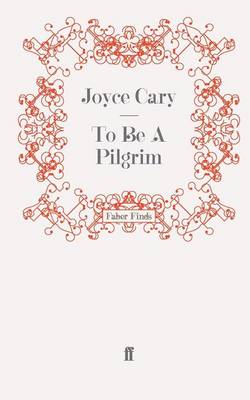First Trilogy
3 total works 3 total works planned
Joyce Cary wrote two trilogies, or 'triptychs' as he later called them, and both are in Faber Finds. The first comprises Herself Surprised (1941), To Be a Pilgrim (1942) and The Horse's Mouth (1944). The Horse's Mouth is a portrait of an artistic temperament. Its protagonist, Gulley Gimson, is an impoverished painter who scorns conventional good behaviour. If a bad citizen, he is a good artist, so wholly preoccupied with his art that he is willing to endure any privation. For Gulley there is but one morality: to be a painter. "Joyce Cary is an important and exciting writer...To use Tennyson's phrase, he is a Lord of Language ...if you like rich writing full of gusto and accurate original character drawing, you will get it from The Horse's Mouth". (John Betjeman, Daily Herald).
Joyce Cary wrote two trilogies, or triptychs as he later preferred to call them. The first comprises: "Herself Surprised", "To Be a Pilgrim" and "The Horse's Mouth". The trilogy (or triptych) is designed to show three characters, not only in themselves, but as seen by each other. Each of the novels is seen through the eyes of a different character, so that each part is complete in itself. This is the story of Sara. She sees herself as the victim of mysterious events and her own soft heart, whereas to Wilcher (the protagonist of "To Be a Pilgrim") she is the devoted and unselfish servant and mistress, and to Gully Jimon ("The Horse's Mouth") a vain, self-deceiving man-catcher. 'There seems to me more truth of human nature, a profounder understanding of the springs of action in "Herself Surprised", than in any novel I have read for long time' - L.P. Hartley.
Joyce Cary wrote two trilogies, or triptychs as he later preferred to call them. The first comprises: "Herself Surprised", "To Be a Pilgrim" and "The Horse's Mouth". In the months before his death, Tom Wilcher, who is looked after by his niece and nephew (both concerned for their inheritance), lives his life over again in the house in which his childhood was spent. The religious family life of his youth is contrasted with the rootlessness of his heirs. The character of the old man is seen through his attitude to his family and the way in which he tries to make them feel the value of a family tradition. 'A remarkable novel ...An original attempt to embody a complete vision of life, and it contains scenes as vivid and beautiful as anything else in modern fiction' - "The Listener". 'Its excellence lies in the great skill with which a character is drawn in all its variety, in the minor portraits of members of his family, with their subsidiary stories, and in the unhesitating and illuminating detail of half a century of English life' - "Observer".


